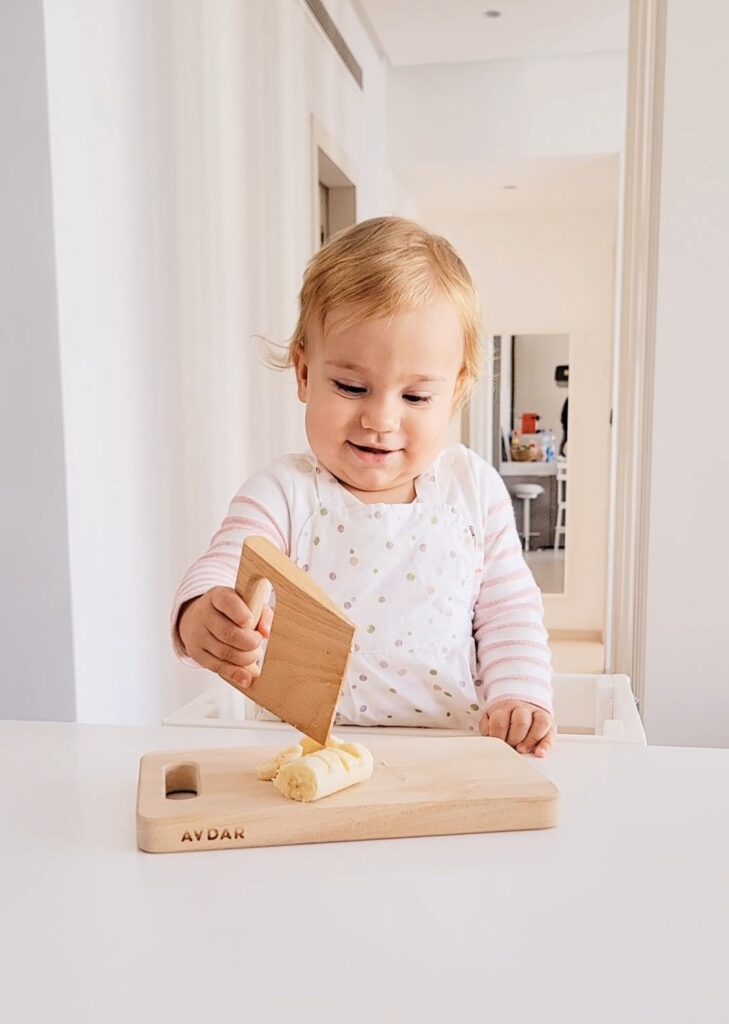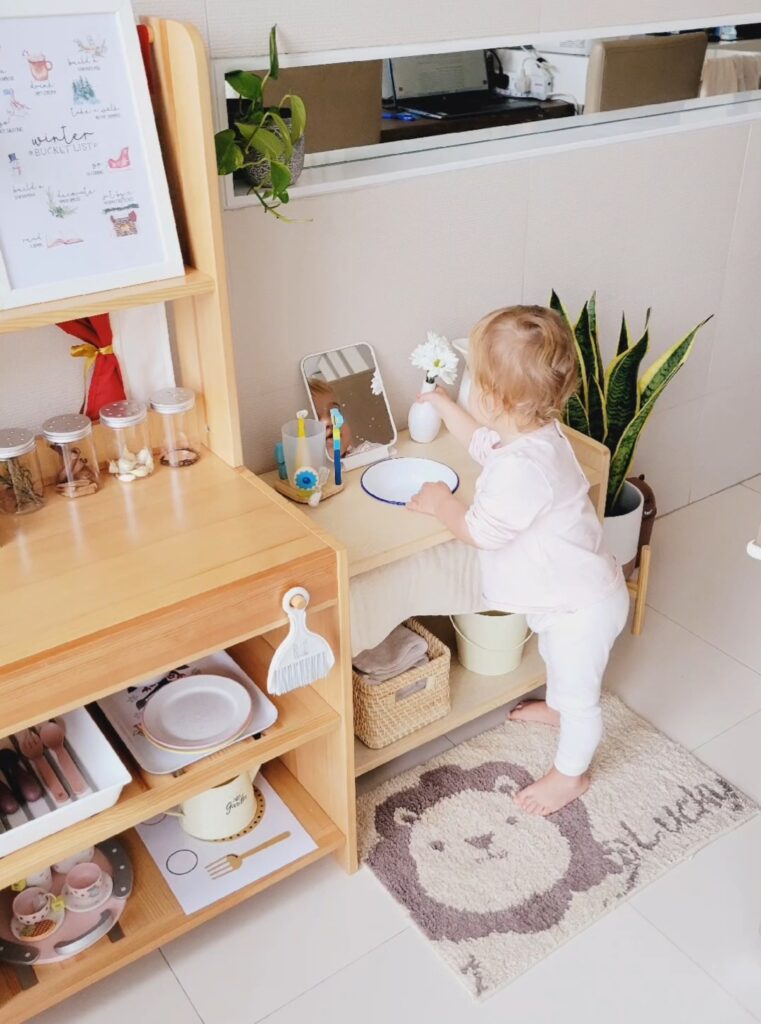"Never help a child with a task at which he feels he can succeed" Maria Montessori
Practical Life is one of the five areas of curriculum in Montessori education. Practical Life work includes preliminary exercises such as: spooning, tweezing, pouring, sweeping, buttoning, dusting, carrying: care for self, care for the environment, grace and courtesy and control of movement.
In the Practical Life exercises the children are given breakable, real materials to manipulate. When the children will be given these opportunities they will increase their self confidence. They will learn how to respect and care for their environment.

What is Practical Life?
Practical Life is purposeful activity, when a child is doing practical life he is working with intelligent purpose. Practical life give the child the sense of being and belonging to a family and to a community.

Why Practical Life is Important?
Practical life activities are not simply about learning how to broom, sweep or wash a table, but it’s much more that that. Practical life is about preparing that child for life.
It’s about building self-esteem, basic trust, independence and autonomy, participating in doing life, ego development, self-sufficiency, problem solving, confidence consequences of his choices, completing a cycle of work, all qualities that will help him in life but also later on in academic work.
These activities are purposeful, the child learns to do work with intelligent purpose and this will lead to concentration.
“The child who concentrates, is immensely happy” – Maria Montessori.
They are mindful and joyful, the children in a Montessori environment thrive, they are concentrated and do their chosen work with joy.
Practical life nurtures the child independence and nurture his will for “let me do it myself” (hormè)
Practical Life activities indirectly prepare the child for reading and writing. Through Practical Life Activities, the child hones hand-eye coordination and muscle control and executes the tasks left to right and top to bottom preparing him for writing and reading.
Our responsibility as adults is to prepare the environment so this can meet the child’s needs and a place where the child can thrive and develop at their pace; we need to link the child to his environment and remove the obstacles.

Purpose of Practical Life
Practical life have so many purposes and benefits such as:
🌸teaches a practical skill
🌸adaptation (helps the child to adapt to his culture, community or group)
🌸 functional independence (helps teach the child how to do by himself, leads to intellectual independence)
🌸social awareness
🌸 concentration – trough repetition, the child can concentrate better (we must not interrupt a child that is working on a task, helps him in the order and teaches him sequencing)
🌸 language – through experience, they will have a sensorial knowledge about their environment (I know how a jug is looking like) It grounds the child in reality, in real purpose
🌸self confidence and self esteem
refines movement and coordination, equilibrium, fine and gross motor skills
🌸teaches the child to care for himself, environment and others
My daughter, Francesca, 12 to 16 months - old practical life activities
The major importance in Montessori is that Practical Life activities aren’t directly about teaching a child to clean and dress himself but more directly about completing a work cycle, learning sequencing, concentrating, and being responsible for their environment, themselves and others and preparing them for life.
Practical Life materials
Practical Life materials contain a “control of error” that, once a child has been introduced to a certain work, will help to guide that child to self-correct and self-learn. Therefore he has control over his education and his pace of development. The materials have to be real, breakable and good to manage for the children’s small hands so they can use them independently. A set of practical life items that we love are these, as example.

Teaching a child the Practical Life activities and allowing him to participate in in every day life activities at home, gives him joy, builds self-worth and confidence. He will feel part of the community, he will feel useful and respected.
Once a child builds his inner discipline, confidence and concentration as demonstrated through completing a full working cycle, the child is ready to move on other materials such as sensorial materials.

Subsribe to our newsletter to get our FREE Practical Life Mini Guide
Check us out on our Instagram Page at Montessori In Daily Life and subscribe to our newsletter to receive for FREE our Practical Life Mini Guide
Check out our last video on Practical Life from an young age and the importance of it in a home environment. Francesca was 16 months in those videos.
I hope you enjoyed our post and thank you for being here!
Gratefully,
Raluca
